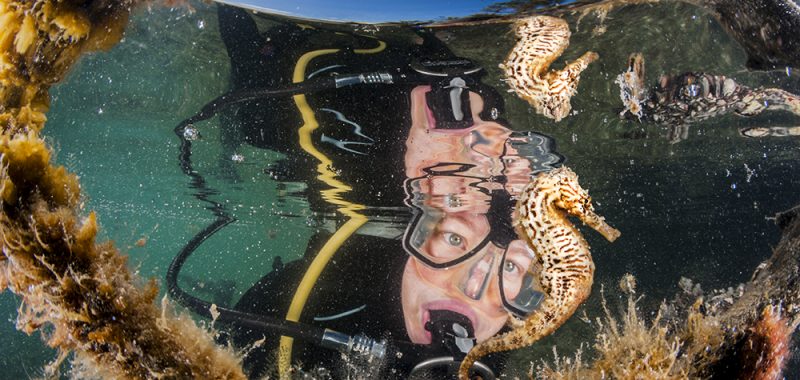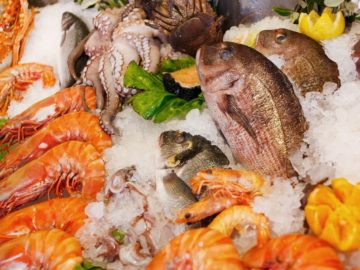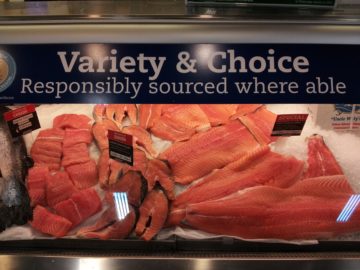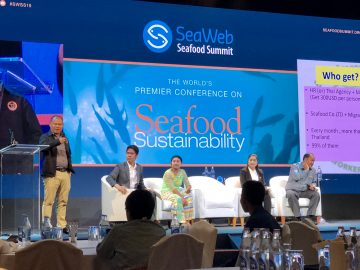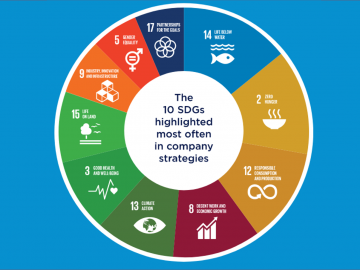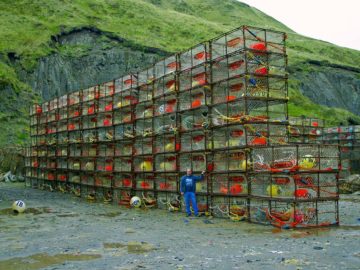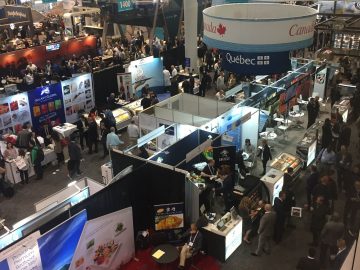Sustainability is more than a promise, it requires showing up and doing the hard work.
I can’t believe we are in the final weeks of 2019. As the world gets ready to start a new decade (where did 2020 come from anyway?), I am getting ready to start a new chapter in my professional life. I have made the very difficult decision to step down as SeaChoice National Manager effective January 1. Difficult because it has been an absolute pleasure to manage the SeaChoice team for the last three years. The end of the year, the decade, and this chapter in my life have all been cause for reflection. And when I think about what has defined SeaChoice’s work – and so mine in turn – during our time together, it comes down to holding people accountable to their commitments. This has been true for SeaChoice, but also for the environmental movement writ large.
Commitments to sustainable practices are being made at every turn. Globally we have seen 187 governments committing to the Paris Agreement, which in turn commits them to limiting the global average temperature rise to well below 2°C. The 193 United Nations member states have adopted the 17 Sustainable Development Goals (SDGs) that together provide “a blueprint for peace and prosperity for people and the planet, now and into the future”. And 196 Parties to the Convention on Biological Diversity have adopted a Strategic Plan for Biodiversity that includes 20 time-bound, measurable Aichi Biodiversity Targets to be met by the year 2020 (yup, next year!). If all those promises were turned into reality, what a wonderful world it would be! Unfortunately promises do not necessarily equate to action, which is why the world needs groups like SeaChoice.
If all those promises were turned into reality, what a wonderful world it would be! Unfortunately promises do not necessarily equate to action, which is why the world needs groups like SeaChoice.
Holding the seafood supply chain accountable to their sustainability commitments has been a key SeaChoice focus since we transitioned (in 2016) from a consumer facing program to become Canada’s sustainable seafood watchdog. Whether it be holding retailers accountable to their commitments to procure sustainable seafood through Seafood Progress, holding eco-certifications accountable to the sustainability promises they make through their standards, and/or holding the government accountable to its promise to ensure truthful and not misleading labelling of Canada’s seafood. The challenge in these examples is not whether industry, certifiers or government are talking the talk – but whether they follow through to walk the walk. Indeed, supply chain and regulator commitments to sustainability have become increasingly status quo. The challenge lies in making sure they follow through, a challenge SeaChoice has risen to meet very well.
SeaChoice will continue to meet this challenge into the next decade. For just two examples, we are very pleased to see our campaigns reflected in the Prime Minister’s mandate letter to the Minister of Fisheries and Oceans, that she “work with the province of British Columbia and Indigenous communities to create a responsible plan to transition from open net-pen salmon farming in coastal British Columbia waters by 2025” and “support the Minister of Health who is the Minister responsible for the Canadian Food Inspection Agency in developing a boat-to-plate traceability program…”. You can count on the SeaChoice team to make sure these paper promises lead to real action on behalf of Canada’s wild salmon in the case of the farms, and transparency in Canada’s seafood supply chain in the case of traceability.
Managing a team whose mandate is to hold people accountable to their commitments has prepared me well for my next role. I am returning to The University of British Columbia in order to pursue my efforts to advance seahorse conservation. Seahorses are extraordinary fishes – they are the only animal we know of where the male gets pregnant, for just one example. And they are beautiful. But they are also overfished by the world’s most damaging fishing gears and traded internationally in huge numbers for use as traditional medicines. Because of this they are listed on Appendix II of The Convention on International Trade in Endangered Species (CITES). The listing means that all CITES Parties (member countries, now 182 plus the EU) are obliged to ensure that their seahorse exports are sustainable, legal and monitored. But for the listing to be effective in addressing the threats seahorses face, it needs to be more than a paper promise – it needs to be implemented. This summer I facilitated the Parties to adopt an action plan to move seahorse trade toward sustainability. This created a time-sensitive opportunity to hold CITES Parties accountable to the promises they have made for seahorses.
At the end of the day, having a gym membership doesn’t automatically make you fit. You need to show up and do the hard work.
At the end of the day, having a gym membership doesn’t automatically make you fit. You need to show up and do the hard work. It is promising to see more and more actors across the seafood supply chain taking out “sustainability memberships”. It’s a very important first step. But without showing up the membership will mean nothing at all. That’s why SeaChoice will continue to do the hard work of holding all actors accountable to their commitments. I’m proud of the progress my team has made so far, and can’t wait to see what they do next.
That’s me signing off. So long SeaChoice, and thanks for all the fishes!
